
Baseball loves its archetypes. But what happens when a player breaks the mold so thoroughly that the sport doesn’t quite know what to do with him? Enter Giancarlo Stanton, a slugger who moves with all the grace of a refrigerator being pushed uphill yet somehow transcends his limitations through sheer, jaw-dropping power.
Stanton represents baseball’s most fascinating contradiction. In a game increasingly obsessed with athleticism and versatility, he’s carved out a career that laughs in the face of convention. His body betrays him regularly, his sprint speed ranks in the game’s bottom percentile, and yet when healthy, few players change a game’s complexion faster than Stanton with one swing.
The High School Phenom Who Could’ve Been a Trojan

Before Stanton crushed baseballs into orbit for a living, he stood at a teenage crossroads. At 16, the multi-sport star launched a batting practice homer that cleared 50-foot palm trees and landed on a golf course. Not exactly your average high school highlight reel material.
USC football coach Pete Carroll practically salivated at the prospect of Stanton as an oversized cornerback or wide receiver. Basketball coaches coveted his frame too. But Stanton zigged while everyone expected him to zag, banking on his baseball potential instead. Sometimes the road less traveled leads straight to Cooperstown.
Marlins Debut: The Birth of a Slugger
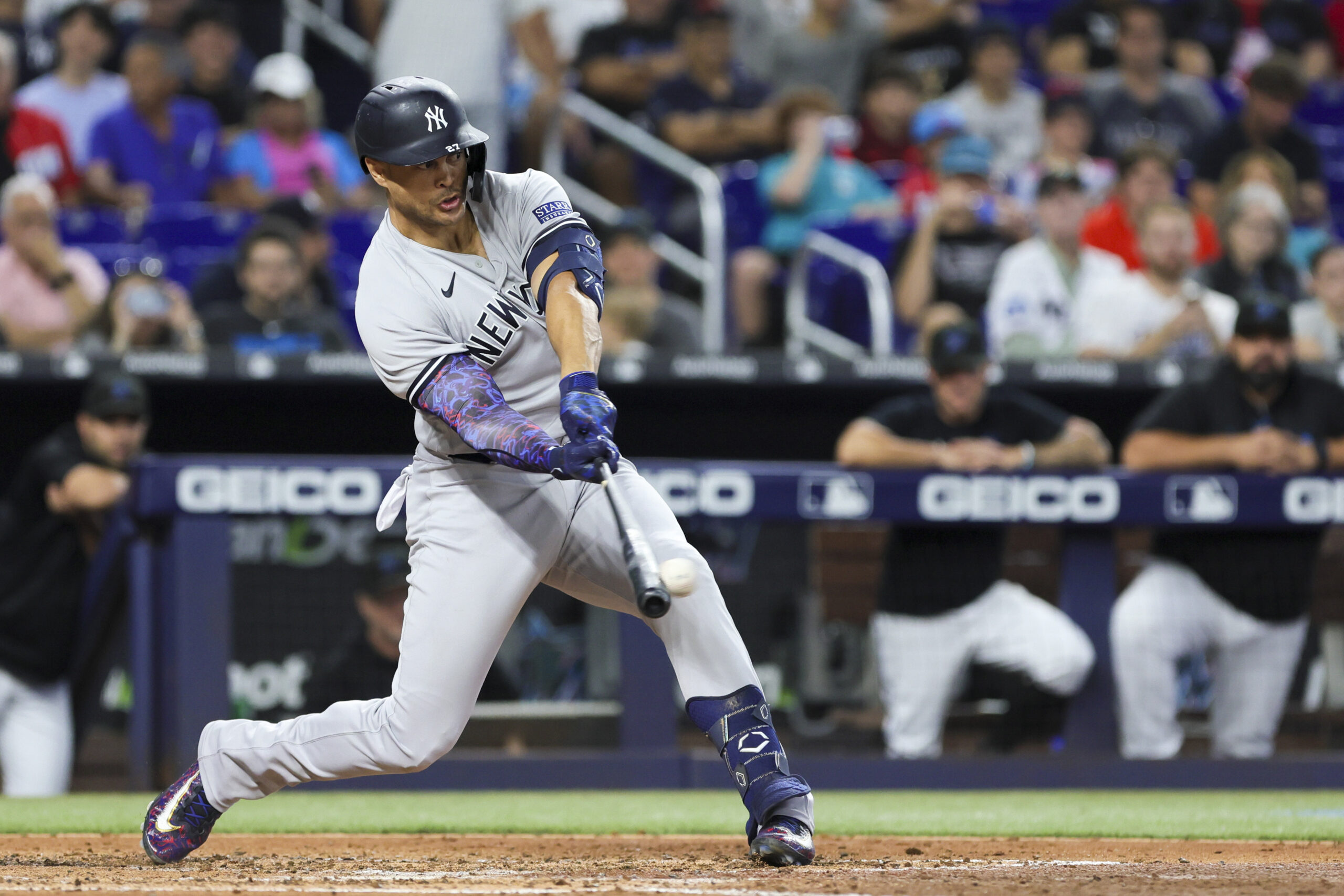
Stanton’s arrival in Miami wasn’t so much a rookie debut as a seismic event. After terrorizing minor league pitching with 21 homers before his call-up, the Marlins unleashed their new weapon on unsuspecting National League pitchers in 2010.
In 100 games, Stanton launched 22 homers traveling an average of 399 feet, with a swing speed of 104 mph – numbers that made veteran scouts reach for new adjectives. His .833 OPS announced that the league had a new force to reckon with, one whose batting practice sessions would become must-see events for early-arriving fans.
The Almost-MVP Season
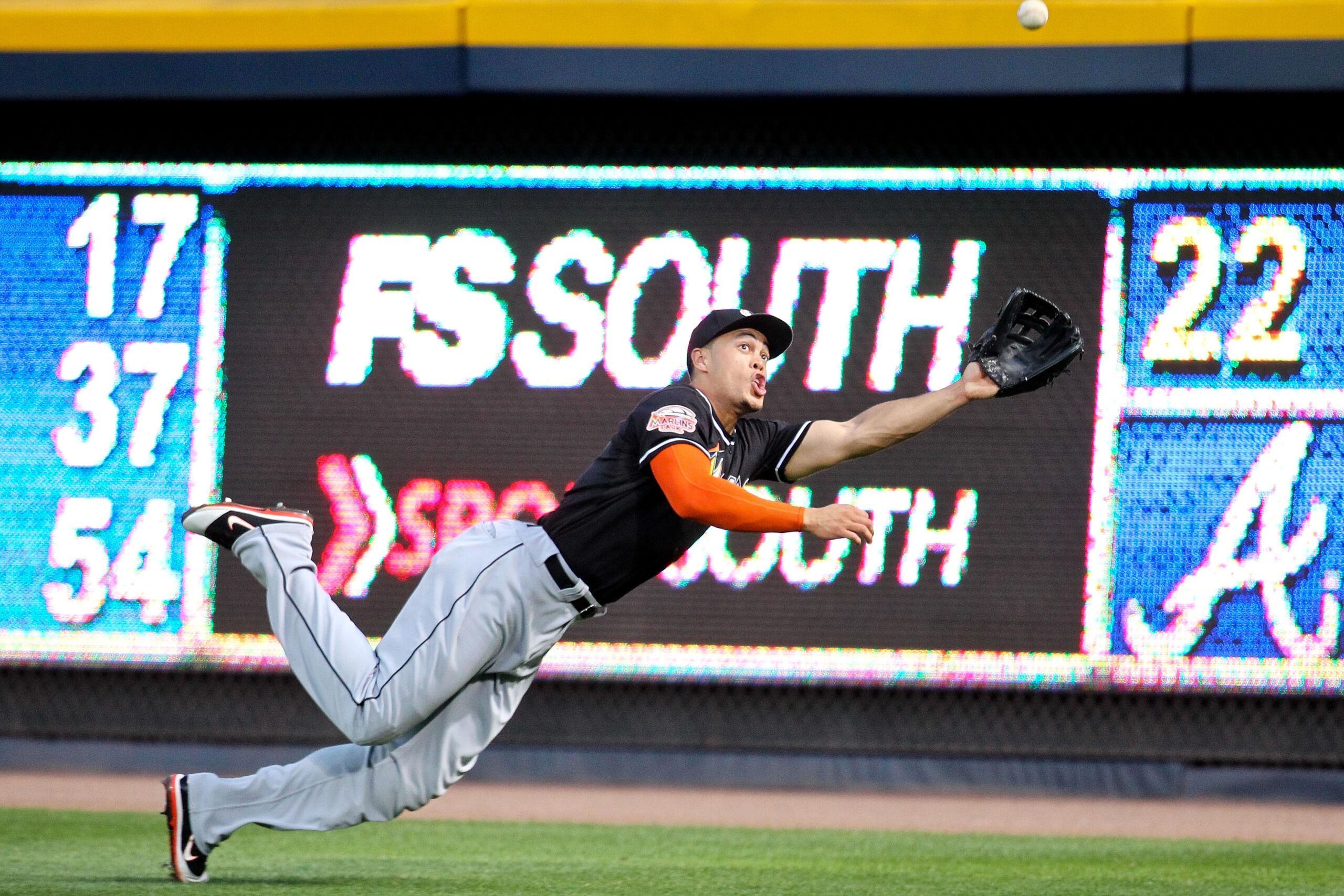
The 2012 season showcased Stanton’s evolution from raw power hitter to complete player. While maintaining a .290 average, he hammered 37 homers and surprised defensive metrics by saving between 7 and 11 outs above average in the field.
This campaign silenced critics who had pegged him as one-dimensional, proving he could impact games defensively while continuing to terrify pitchers. His approach showed newfound maturity – no longer just trying to hit everything to Jupiter, but working counts and hunting pitches he could drive.
The Contract That Changed Everything
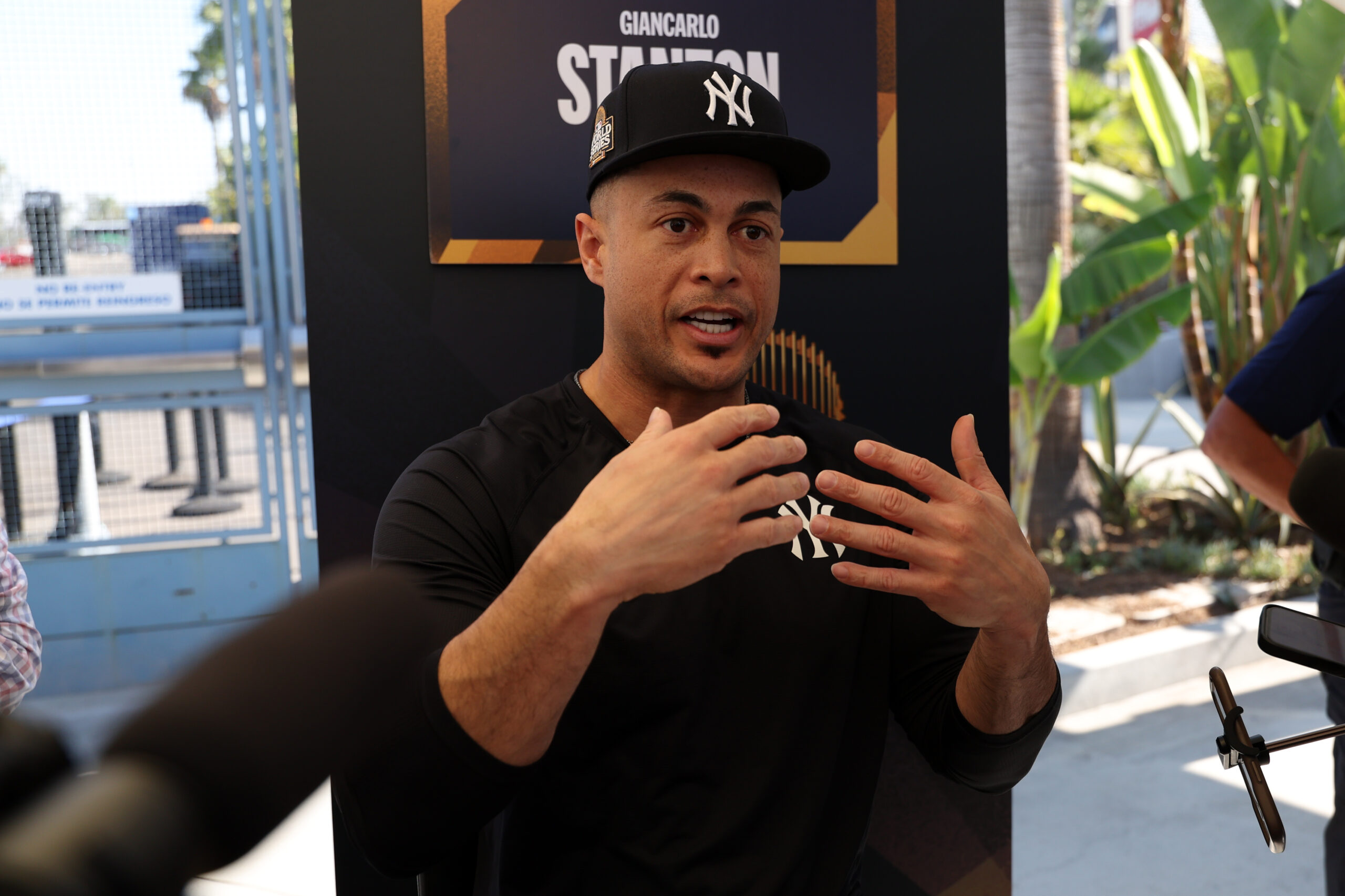
Money changes relationships, and baseball is no exception. After Stanton signed his mammoth $300+ million contract following his 25th birthday, expectations shifted from “promising young slugger” to “franchise cornerstone who better produce like a small-market GDP.”
The 2017 season justified every penny. At 28, Stanton put together a campaign that broke calculators – 59 homers, 132 RBI, and a 1.007 OPS. His defensive skills remained sharp enough for Gold Glove consideration. The narrow MVP victory (by just 2 points) capped a season where Stanton silenced doubters by refining his approach.
Pinstripes and Pressure
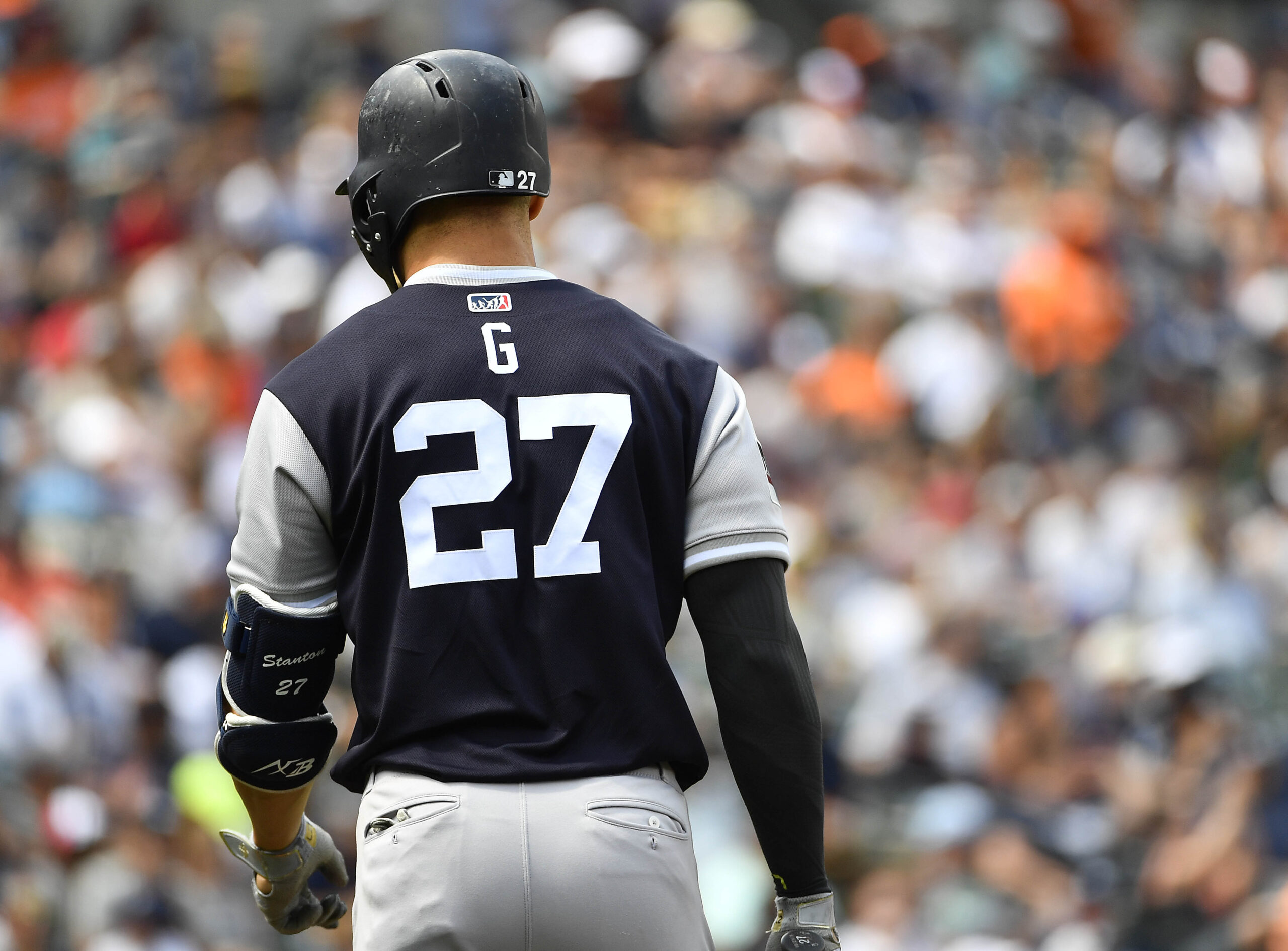
The Yankees’ pursuit of Stanton reads like a plot twist. GM Brian Cashman had been stalking Shohei Ohtani since 2012, only to discover that geography would thwart his plans. So Cashman pivoted to Plan B, which turned out to be a 6’6″ slugger with a contract the size of Manhattan.
This trade created baseball’s version of the Twin Towers – Judge at 6’7″ and Stanton at 6’6″ – patrolling Yankee Stadium. But Stanton now faced a different monster: the New York spotlight. The pressure cooker of the Bronx doesn’t just test talent; it tests mental fortitude. Would Stanton’s power play in the Big Apple, or would expectations prove too heavy?
The Bronx Adjustment Period
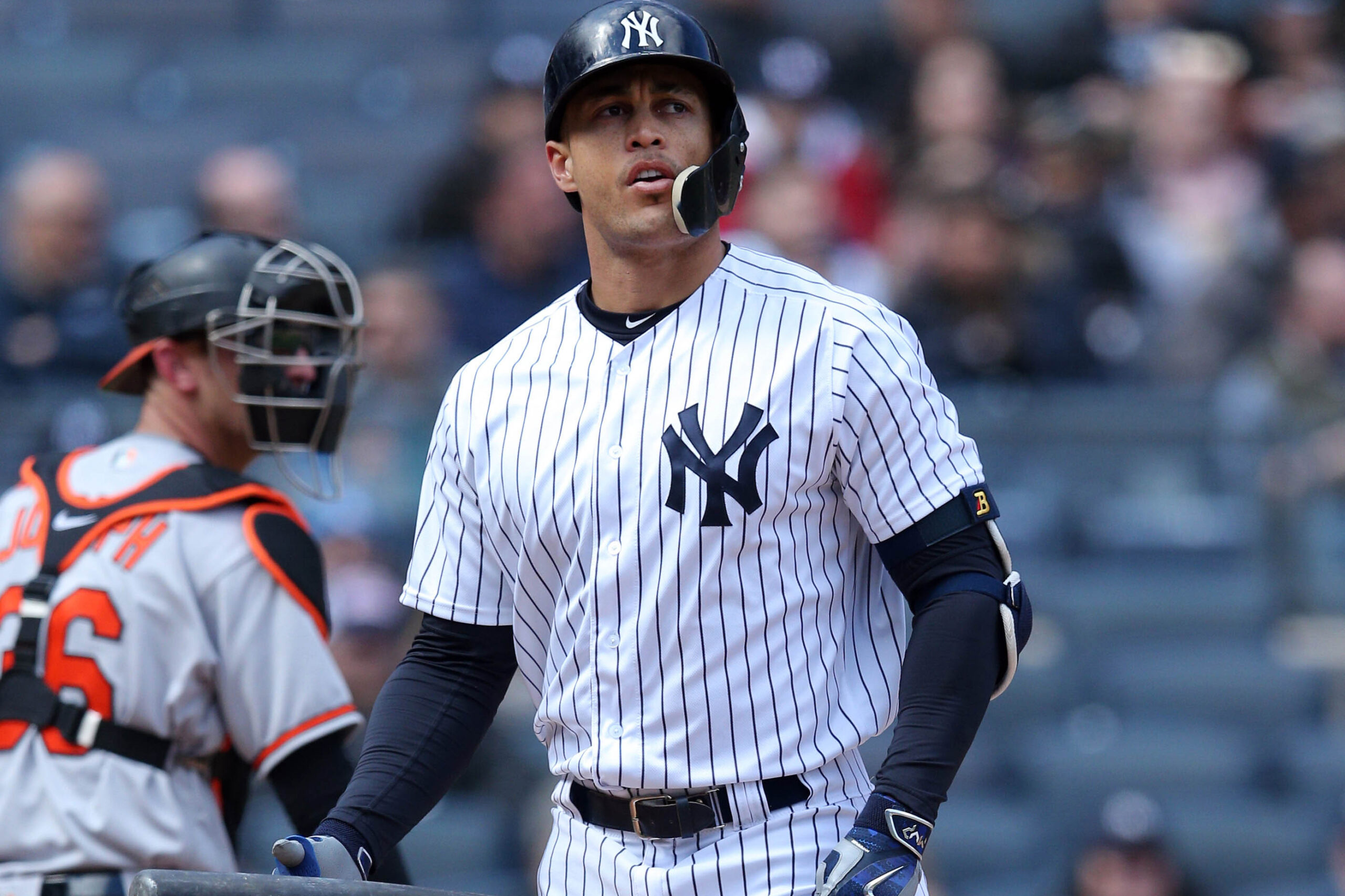
Nothing humbles a superstar faster than New York’s unforgiving fanbase. Stanton learned this when he struck out five times in a game – a career first that had Yankees fans reaching for their phones to tweet hot takes about the new guy.
From May through August, though, Stanton found his stride. He boosted his average to .288 while launching 28 homers, helping the Yankees reach 100 wins. At 29, he finally experienced October baseball, marking the occasion with a homer in the ALDS. This stretch revealed Stanton’s resilience – a quality that would become increasingly important as physical challenges mounted.
When Bodies Betray

Baseball careers rarely follow straight lines, but Stanton’s took more detours than a GPS rerouting through construction zones. The 2019 season began his injury odyssey – bicep, knee, and calf issues limited him to just 18 regular-season games. The shortened 2020 season saw him play only 23 of 60 games.
Stanton’s sprint speed plummeted from the 55th percentile to the 25th. By 2022, injuries limited him to 398 at-bats as his average sank to .211. The 2023 season brought more challenges – a .188 average through 399 plate appearances prompted Yankees GM Brian Cashman to publicly acknowledge what everyone knew: injuries had become Stanton’s unwelcome shadow.
2024: Flashes of Former Glory
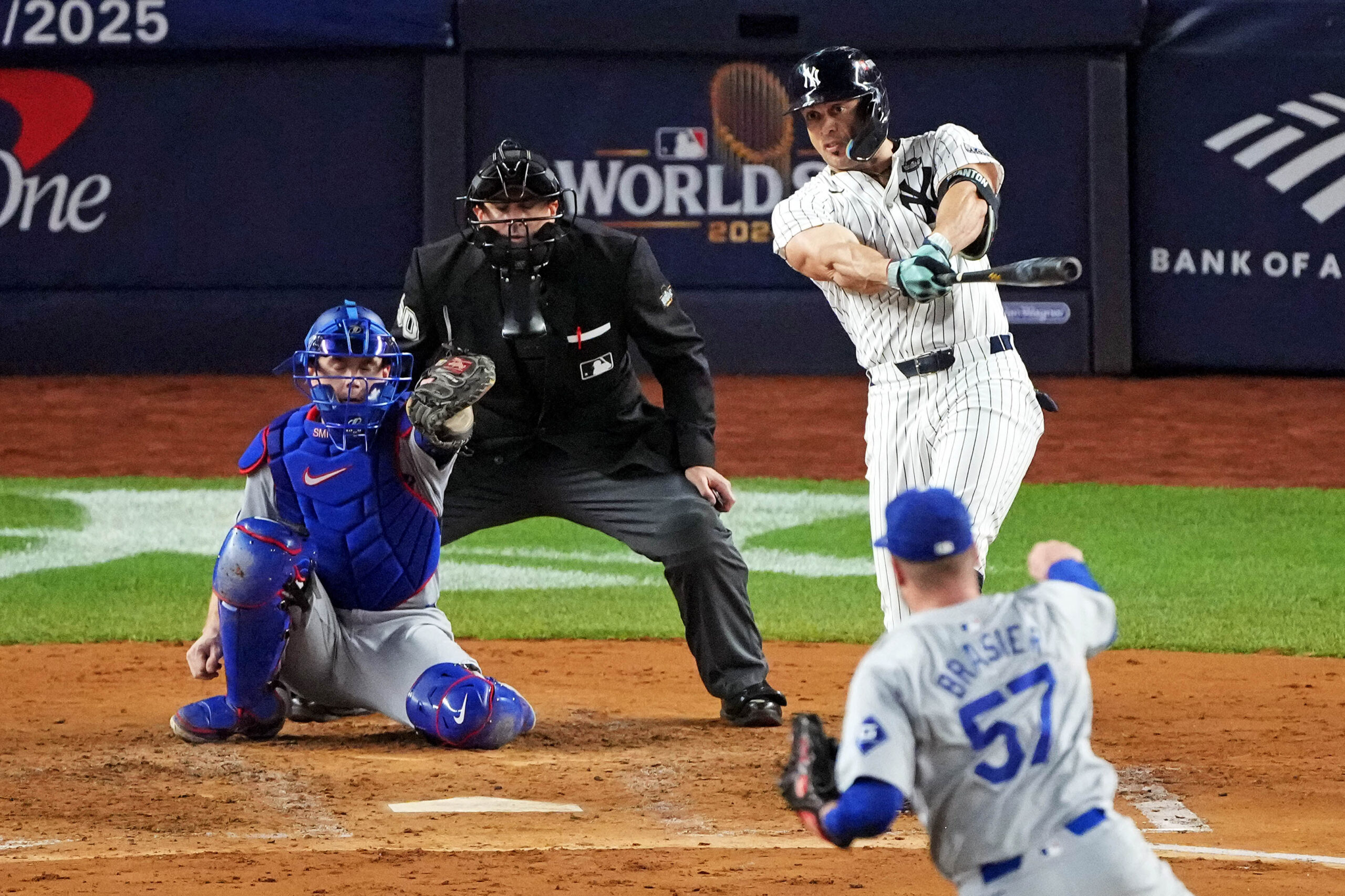
Athletes adapt or they disappear. Stanton chose adaptation. In 2024, his bat speed bounced back to 80 mph as he led MLB in fast swing percentage at 98.4%. Like an aging rock star who can still hit the high notes even if he can’t jump around stage anymore, Stanton showed he could still crush baseballs when his body cooperated.
Another hamstring strain crashed the comeback tour, sidelining him for a month. His season split into two halves – a respectable .246 across 260 first-half at-bats versus a concerning .210 over 157 second-half at-bats. The pattern reinforced what Yankees fans had accepted: Stanton remained capable of brilliance, but expecting consistency had become a fool’s errand.
October’s Redemption Song
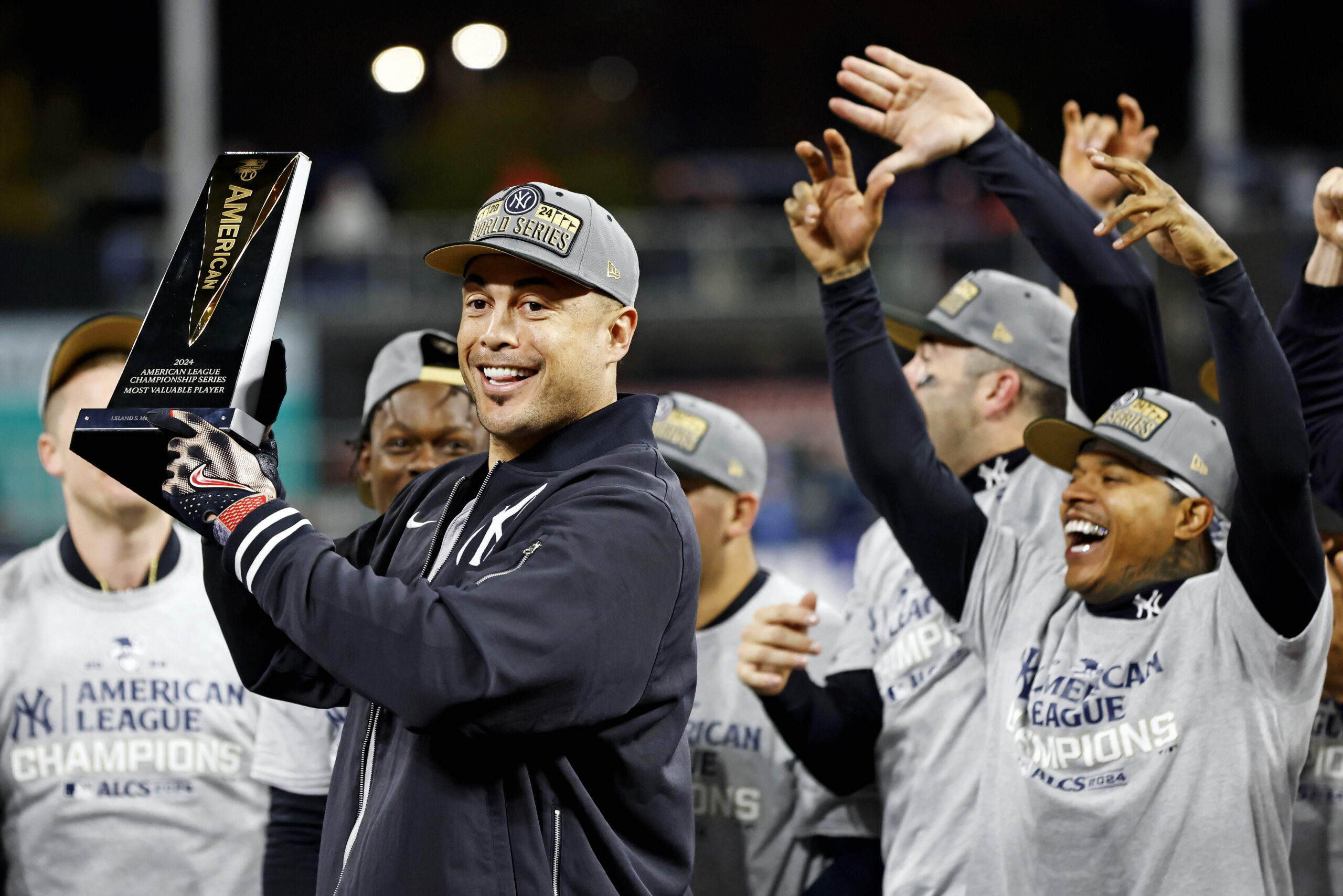
Baseball has a funny way of writing surprising third acts. The 2024 postseason transformed Stanton from injury-prone disappointment to October hero faster than you can say “what have you done for me lately.” His 16 homers across 36 postseason games rewrote Yankees record books and changed his narrative overnight.
Most impressive was his 26 plate appearance streak without a strikeout – remarkable for a power hitter whose swing had more holes than Swiss cheese during regular seasons. His ALCS MVP performance validated his importance to the Yankees and showcased how specialized skills can overcome limitations in the right context. When pressure peaked, so did Stanton, demonstrating that there’s something uniquely valuable about a player who can change a playoff series with one swing.



